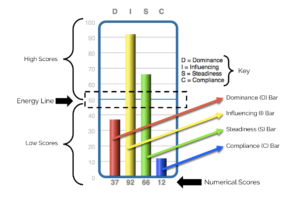
Understanding Your DISC: Steadiness
Steadiness reflects how you respond to pace. Learn more in this post.

Steadiness reflects how you respond to pace. Learn more in this post.

Whether you’ve taken the IndigoPathway quiz or not, DISC scores can have a huge impact in helping you understand different aspects of your personality. DISC is an acronym that stands for Dominance, Influencing, Steadiness, and Compliance, the four categories that make up a person’s DISC results. Learn more in this post.
aesthetic AI asking awards college fits Communication compliance continuous learning creativity DISC dominance Education empathy Empowering Educators FBLA future of education goals Indigo Indigo Assessment Indigo Data Indigo Education Company individualistic influencing leadership LearnLaunch Listening mentoring Motivators Partners Peak to Peak High School Personalized Learning persuasion planning Podcasts Professional Development self-awareness social soft skills Speaking Engagement steadiness team Teamwork theoretical TTI utilitarian